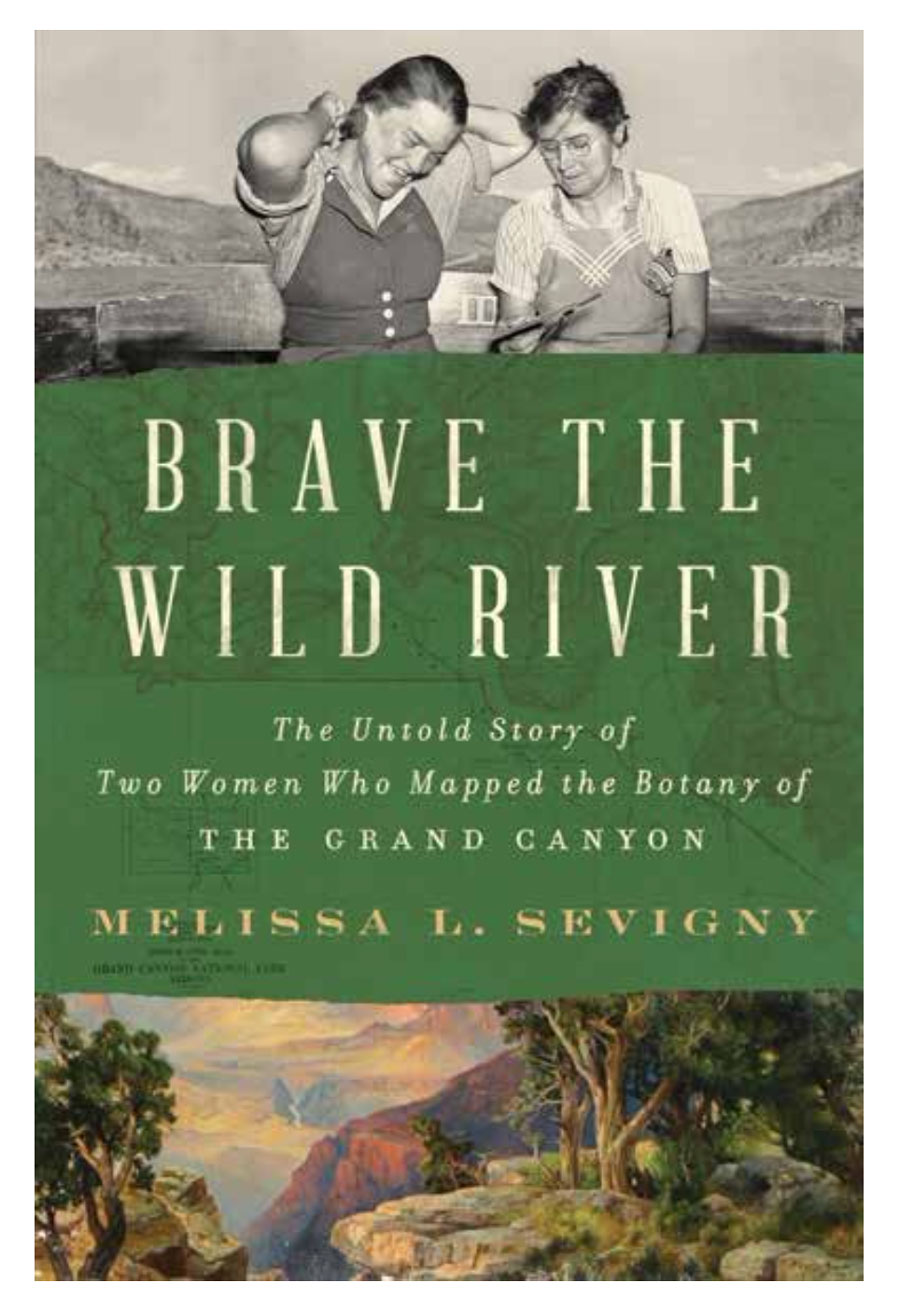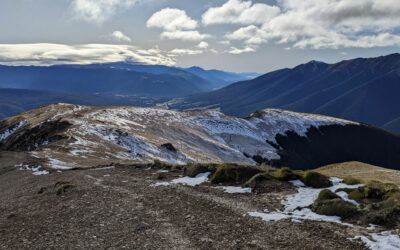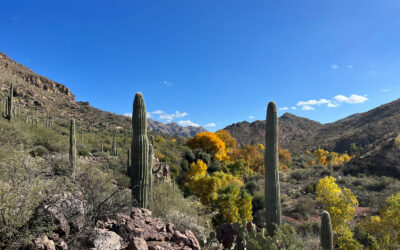Digital Review
Reviewed by Patrick Kelly, Media And Book Review Editor
Wilderness Digest
April 2024 | Volume 30, Number 1
WHAT DOES ‘WILD’ MEAN ANYWAY?
A Review of Brave the Wild River: The Untold Story of Two Women Who Mapped the Botany of the Grand Canyon, by Melissa L. Sevigny
Brave the Wild River: The Untold Story of Two Women Who Mapped the Botany of the Grand Canyon by Melissa L. Sevigny. 2023. W. W. Norton and Co. 304 pp. $30.00 (hc).

Sevigny gives us a vivid, near-daily account of the adventurous expedition, which took 43 days and covered some 1,000 water miles. The trip’s main organizer, Norman Nevills, ran a tourist outpost in Mexican Hat, Utah. He had struck up a friendship with Elzada Clover, then age 42, a botany professor at the University of Michigan. She had become enamored of the American Southwest, and wanted, as Sevigny writes, “to make a field study of all the cacti” there (p. 20). Nevills, who had dreams of starting a river outfitting business, proposed that Clover should study the botany of the Colorado basin via a float trip with him and a few others. Clover agreed, and recruited Lois Jotter, a 24-year-old doctoral student whom she was advising, to come along as a fellow researcher.
Nevills built three boats out of state-of-the-art plywood, shaping them such that they could be spun around and run stern-first through rapids, thus enabling the rower to face downriver. Called “cataract boats,” they each weighed 600 pounds and sported 2,300 wood screws. The screws held the boats together remarkably well and leaked a lot less than one would have guessed.
Sevigny describes that the two women probably worked harder on the trip than any of the other four (later five) travelers. When not floating the river, they spent many an hour collecting specimens and working up notes. Additionally, they did all the cooking and after-meal cleaning up. However, Sevigny describes that there was one thing the two female scientists did none of: whitewater rowing. That did not please the younger one, Jotter, who wanted to try running a rapid or two. The team leader, Nevills, claimed she was too reckless. One can guess, though, that gender bias had something to do with it as none of the men had any more rowing experience than Jotter did. In contrast today, Sevigny notes, about one-third of the Grand Canyon guides are women.
By the end of the trip, Clover had grown so fond of the river that she fell into a depression, confiding to her diary that she did not want to leave the place. As soon as possible afterward, she took a 10-day float down the nearby San Juan River, in no hurry to return to her university job. She continued to inventory the fauna of the American Southwest for the rest of her life and often mentioned what can best be described as the profound spiritual impact the Colorado River made on her.
Sevigny is excellent at putting events into historical context. Regarding the management of the Grand Canyon region, for example, we learn that Park Service officials did all they could for many years to discourage anyone – female or otherwise – from trying the “dangerous stunt” of running the canyon. Little could they have imagined that by the early 21st century, 27,000 people per year would run it.
We learn also that the Havasupai people were moved out of the way to accommodate the nascent tourism industry around the Grand Canyon. As early as 1893, before the canyon became a park, the Grand Canyon forest reserve supervisor, W. P. Herman, had declared the Havasupai unwelcome. The place, he wrote, was most valuable as a scenic attraction for foreign visitors and the US’s more “intelligent citizens.” In his words, it was “just and necessary to keep the wild and unappreciable Indian from off the reserve” (p. 165). The Havasupai got little better treatment when the National Park Service took over. Sevigny writes, “In 1928, park rangers drove the last Havasupai from the oasis known as Indian Gardens (now called Havasupai Gardens)” (p. 165).
Sevigny also discusses the history of gender stereotyping and its role in this story. The expedition drew a lot of media attention. But what stands out is the sheer laziness of nearly all the reporters as they filled their stories with overdone sexist tropes and clichés. Their reports lacked curiosity about who the women really were. They reported Clover and Jotter saying things they never said. And at least one reporter did not even bother to mention that the women were doing botanical work. Some even seemed to take it as a personal affront that two “ladies” were having an adventure, sleeping on the ground, and getting their clothes muddy. As one reporter put it:
Why should these women risk their lives in such a perilous exploit? The trip has been made before, and hence there was little which another expedition could add to the geological and scientific knowledge of that marvel of nature. If the trip had to be made, there were men who could have taken their places, for the presence of women in the party was not essential to its success. (p. 219)
In the book, Sevigny might have developed further the topic of the history of women adventurers. By 1938, women had long since been doing remarkable things in wild places all over the world. Mountaineering, for instance, can be one of the most strenuous and taxing of wildland pursuits. Yet 20 years before, one Alma Wagan had summited all the major peaks in Washington and Oregon, had backpacked all over the north Cascades, and was a licensed mountain guide in Rainier National Park. In 1926, a full decade before Clover and Jotter’s adventure, a female swimmer named Gertrude Ederle swam the English Channel, “then considered one of the toughest endurance tests in the world, beating the fastest man’s existing record by nearly two hours” (WETA 2023).
And in 1895, a Brit named Mary Kingsley canoed up the Ogooué River of West Africa, “collect[ing] specimens of fish previously unknown to western science, three of which were later named after her.” Accompanied only by Indigenous guides, she taught herself to paddle the native dugout canoes, waded various neck-deep swamps, hiked over densely forested ridges, and made one of the first ascents of Mount Cameroon. As historian Toby Green writes, Kingsley “under[took] feats of exploration and cross-cultural exchange that her male European counterparts had never dared to attempt” (Green 2015, p. xvi).
So, other than the fact that people cling fiercely to their stereotypes, there was no real reason for anyone to be surprised in 1938 that two women were part of a Colorado River expedition.
The Old Timers Trip
As mentioned, Clover and Jotter’s baseline botanical data from 1938 has proved exceptionally useful, providing, as Sevigny notes, “a hedge against the human tendency to forget how the world used to look” (p. 245). In 1994, the US Geological Survey sponsored an expedition to “assess ecological changes” in the Colorado through the Grand Canyon. Their team consisted of several scientists who had done work along the Colorado. The scientists named it “The Old Timers Trip.” The oldest-timer in the group was an 80-year-old woman who had been among the more youthful members of the 1938 “Nevills Expedition” 56 years before. She was now called Lois Jotter Cutter, having married, in 1948, a Cornell mycologist named Victor Cutter, Jr.
Sevigny reports the many physical changes to the river that Jotter Cutter noticed since her descent of it more than half a century earlier. The changes were caused, most importantly, by the construction upstream of the Glenn Canyon Dam, finished in 1963. The other big factor was the extraordinary increase in recreational use by 1994. As Sevigny writes:
The Grand Canyon was [now] lush and green, but also very, very different. . . . [M]any of the broad white beaches had vanished. . . . Bare sand had become jumbles of boulders or tangles of plants. The giant piles of driftwood were gone, burned in bonfires by early river runners. Even the sounds were different. They couldn’t hear, in the night, the subtle song of sand bars calving away into the water. Sediment no longer scraped the sides of the boats in a rhythmic, rasping lullabye. (p. 246)
There was more change, as “several of the Old Timers noticed the haze of air pollution and complained of noisy overflights from aircraft” (p. 246). Despite all the changes, there remained a certain elemental atmosphere about the place. There was still, as Jotter Cutter said, “a certain feeling that you get when you look up and see one high wall lit up, and the rest less so” (p. 250). These observations prompt Sevigny to pose a question very familiar to readers of this journal. What, she asks,
does “wild” mean anyway? Not untouched by human presence, for even the plants – especially the plants – show how the canyonlands’ first inhabitants tended agave and prickly pear, coaxing them into new shapes. A wild place isn’t one unchanged by humans. It’s a place that changes us.” (p. 250)
Green, T. 2015. Introduction. In Travels in West Africa, ed. M. Kingsely (pp. xv–xxxvi) UK: Penguin Classics ed. (original work published 1897).
Steckel, I. 2022. Alma Wagen: The first female mountain guide at Rainier National Park. https://www.mountaineers. org/blog/alma-wagen-the-first-female-mountain-guide-at-mount-rainier-national-park.
WETA. 2023. WETA American Masters. She was the first woman to swim across the English Channel. https://weta. org/watch/shows/american-masters/she-was-first-woman-swim-across-english-channel#:~:text=Gertrude%20 Ederle%20(1905%2D2003),hours%2C%20and%20challenging%20notions%20about.
REVIEWED BY James M. Glover an emeritus associate professor in recreation at Southern Illinois University. He is the author of A Wilderness Original: The Life of Bob Marshall and numerous articles relating to the history of wilderness exploration and preservation.
Read Next
Forgetting Your Anniversary, Again
This year represents the 30th anniversary of the International Journal of Wilderness.
The Trouble with Virtual Wilderness
How the history of the 20th-century wilderness movement might give us different moral guidance as we confront this new technology.
Revisiting Human’s Role in Wilderness
The question we must ask ourselves today is familiar: Are we guardians, or are we gardeners?



